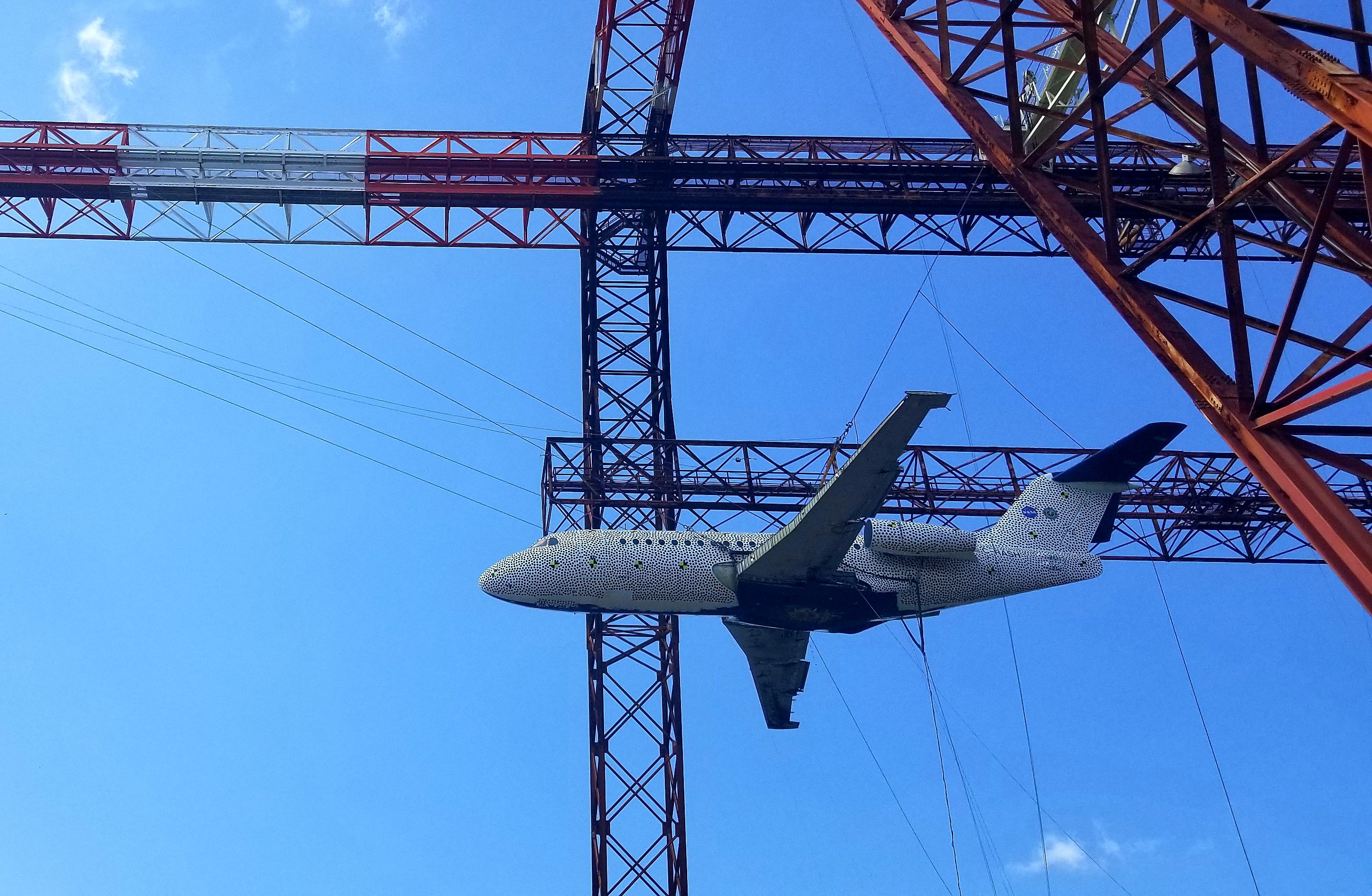NASA and the FAA dropped a 33,000-pound Fokker F28 regional jet from more than 150 feet in the air as part of a crashworthiness test last week. Along for the ride were 24 crash dummies, designed to mimic a range of individuals from a 3-year-old child to a 273-pound adult. In addition to helping the FAA develop guidance on how to determine aircraft crashworthiness and gathering data on how the cabin interior and occupants are affected in an accident, the agency says test results will “support the development of a new performance based rule that will simplify the certification process by eliminating or minimizing the use of special conditions to certify aircraft.”
The test took place at the Landing and Impact Research Facility at NASA’s Langley Research Center in Hampton, Virginia. The aircraft was rigged with high-definition and high-speed cameras and painted with hundreds of black dots. “Specialized cameras will track each dot so we can track the motion of any deformation of the aircraft,” said Langley’s structural dynamics branch head Martin Annett. “Once all dot locations are computed, the entirety of the airframe deformation can be displayed and examined.”
After the drop, the National Transportation Safety Board conducted dimensional scans of the aircraft “to compare its pre- and post-test structure.” NASA purchased the aircraft used in the test in 2000 after it retired from service with Canadian Regional Airlines. Once generated, test reports will be made available to the public.




































Okay, I raise the “BS” flag here. Not about the idea of the test but about the test vehicle used. The F-28 has about as much relevance to today’s regional aircraft as a bulldozer does to riding lawnmower. The F-28 was designed in the mid-60s, well prior to the advent of computer design done at today’s levels. The materials utilized to make the aircraft are completely dissimilar as well! I currently fly a DC-8 in private use. That lady was also built in the same time period as the F-28. She is a real sturdy machine with skin as thick as bridge components. I jest somewhat there but the fact remains that today’s computer designed aircraft are far lighter in weight and with far thinner materials used. Now, I am not saying that today’s aircraft are less crash worthy than the F-28, heck, they might do even better. But, to crash a cabbage then tell be how well an apple will do just doesn’t pass the sniff test.
What a BS test…. proved NOTHING and totally a waste of money. You drop any plane from 150 feet, you’re gonna have issues.
and who cares about an ancient F28 anyway?
I see that it’s of Canadian registry …
There was an unexpected, for me, amount of forward velocity by the time of ground contact. Seems like a drop form 300′ or even higher might produce some interesting and significantly different data.